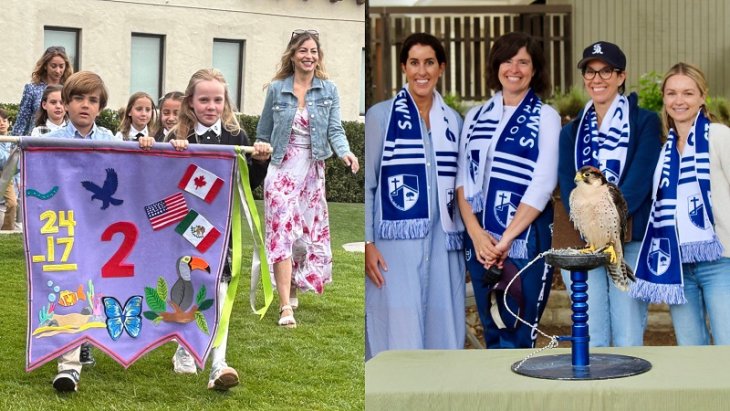A look back at the history of Beverly Hills and Century City provides insight into the past and present attraction of these communities to both local and foreign luxury buyers.
Although the land that became “Beverly Hills” was initially purchased by an investment group for oil prospecting, when the original investors found water on the land they decided a better use of the property would be to create a luxury residential enclave and subdivide the land.
The original investment group, the Rodeo Land and Water Company designed Beverly Hills with the idea that no expense was to be spared.
The area north of Sunset Boulevard was designed for the wealthy with the largest lots. The very first streets, Rodeo, Canon, Crescent, Elevado, Carmelita and Lomitas were designed in 1907 to be wide curving roads. In addition to the streets, the original landscape architect Wilbur T. Cook also designed the green space park along Santa Monica Boulevard.
The area south of Sunset Boulevard and north of Santa Monica referred to as “the flats” was planned to be affordable for the middle class.
The area south of the railroad tracks along Santa Monica Boulevard was originally sold to buyers who would work for the wealthier residents of Beverly Hills. Ironically, some buyers of those low end properties found themselves moving up as the areas south of Santa Monica became the downtown business district of Beverly Hills and quickly appreciated.
Some say the development of the Beverly Hills Hotel, which opened in 1912, probably was the most significant contribution to the success of Beverly Hills. The City was not incorporated until 1914.The hotel was the heart of the City providing the public place to dine, movie theatre and local church.
The hotel served as a great marketing tool for the investors to promote their development. As it turned out, visitors staying at the hotel would strike up conversations with local residents congregating there and some visitors found themselves enticed into returning to purchase plots of land.
The hotel which promoted a glamorous lifestyle also attracted celebrities like Douglas Fairbanks and Mary Pickford. They led the way in 1919 for other celebrities when they bought a hunting lodge and remodeled it into their mansion known as Picfair. Other celebrities such as Gloria Swanson, Will Rogers, Charlie Chaplin and Rudolph Valentino followed.
The roaring 20s brought a speedway track for racing to the south part of Beverly Hills comparable to today’s Indie 500. Beverly Hills continued to grow along with its image and heritage as a well spring of “fertility” and “abundance” as declared by the Tongva, the first Native American inhabitants of the area.
Trousdale Estates carved out of the foothills of Beverly Hills in the 1950s was developed after the Doheny ranch was subdivided. This development is renowned for its Mid-Century masterpieces by famed architects like Frank Lloyd Wright, A. Quincy Jones, Wallace Neff and Harold Levitt just to mention a few.
A view home site that could have been bought in 1950 for just shy of $30,000 would probably cost several million dollars today just for the land. The original flyer for a completed new Trousdale home in 1950 showed sales prices starting at $79,500.
Past and present celebrity owners in the Trousdale Estates area include among others, Elvis Presley, Frank Sinatra, Dean Martin, Richard Nixon, Jennifer Aniston, Vera Wang, Courtney Cox, David Arquette, Jane Fonda, Elton John, and Simon Cowell.
Landmark sites in Beverly Hills include 501 Doheny Rd. in Trousdale Estates known as the Greystone Mansion. It is now part of a public park owned by the City and is listed on the National Register of Historic Places.
Another landmark is 1011 North Beverly Dr., the former home of William Randolph Hearst and Marion Davies. It has been seen in films including the Godfather and the Bodyguard.
Beverly Hills continues to be defined as a destination for the finest in dining, shopping and entertainment and continues to maintain its mystique.
Adjacent to Beverly Hills, is the business and growing luxury residential community of Century City. Originally developed out of the property owned by 20th Century Fox studios, Century City has its own celebrity history.
The Century Plaza Hotel, the hub of social, political and charitable events in Century City, currently under renovation, has hosted every President since Lyndon Johnson. Upon reopening, it is expected to continue to host such events and expand its night life activities.
The explosion of high end luxury commercial, retail and residential properties in Century City located adjacent to Beverly Hills will enlarge the hub of activity available in the area for dining, shopping and entertainment.
Luxury guard gated residential communities in Century City are attracting celebrities like the Kardashian-Jenner clan. Century City is expected to draw more high end luxury buyers as construction of new luxury residential high rise projects planned for Century City get underway.
Despite real estate cycles, Beverly Hills and Century City continue to attract buyers from the global marketplace as a “safe haven” for investment in today’s world of global uncertainty .
For a free courtesy consultation, contact Bess Hochman, a top Westside Real Estate Broker for over 20 years. Bess is also distinguished by holding a law degree. This article expresses the opinion of the author. You are advised to consult attorneys & others experts specializing in the issues referenced in this article.
Contact Bess: 310.291.4111. E-mail:
Bess.CenturyCityNews@yahoo.com





















